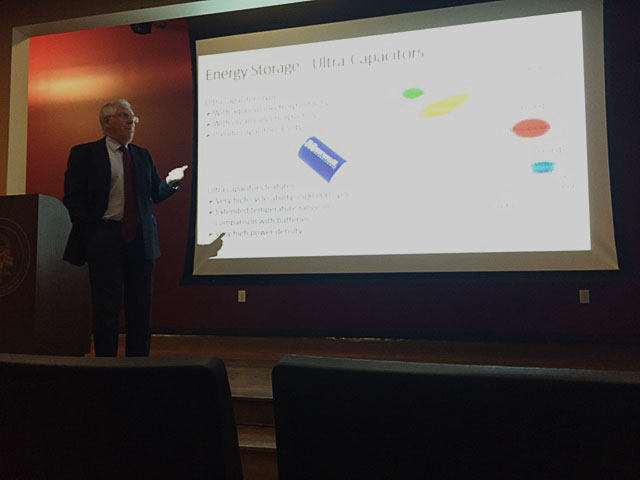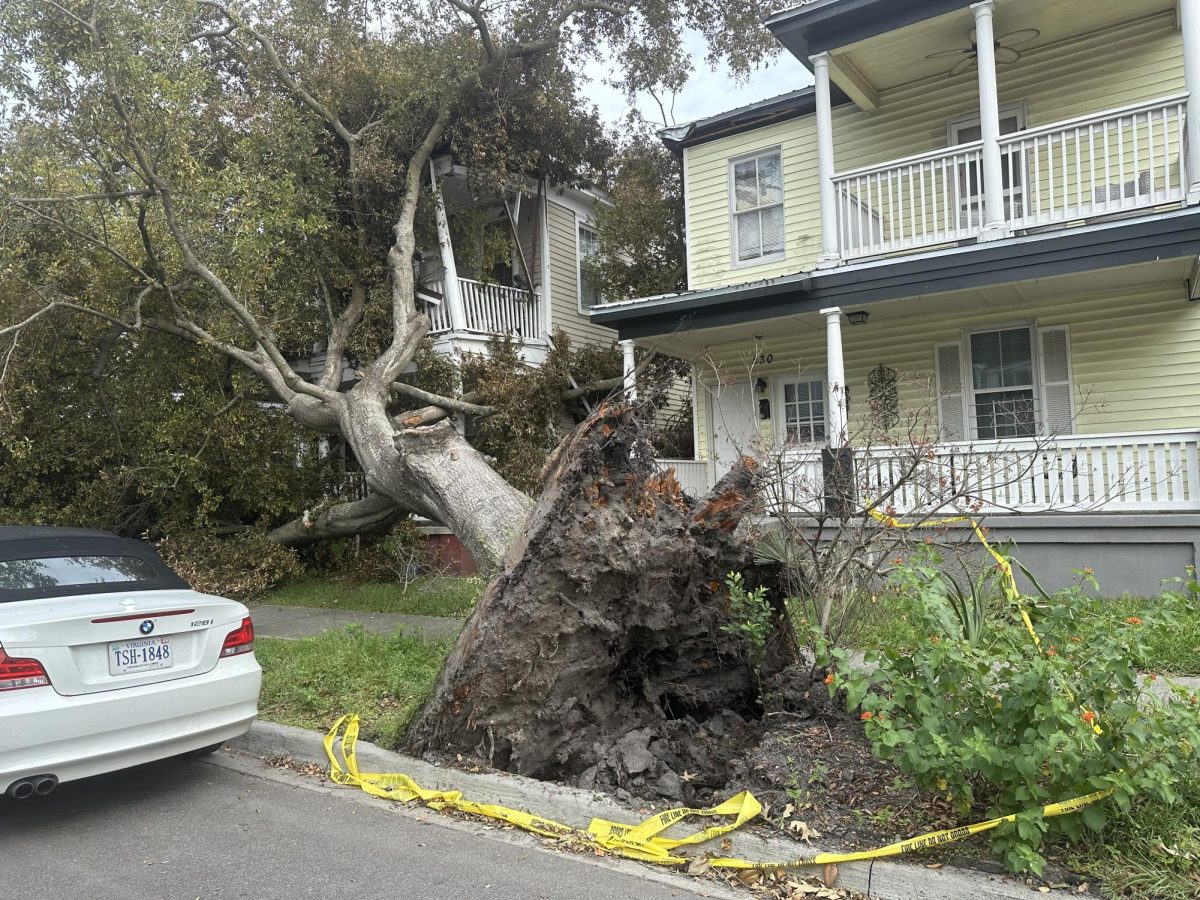Grace Powers, Staff Writer

On Thursday, Nov. 10, Armstrong Professor of Computer Science and Information Technology Felix Hamza-Lup, Romanian Professor of Computer Science and Electrical Engineering Paul Borza of Transilvania University and Professor of Civil Engineering and Construction Management Marcel Maghiar of Georgia Southern University all convened in Armstrong’s Ogeechee Theatre to discuss the importance of and technology involved in renewable energy.
Working together, the professors developed a technology that would increase energy savings and thermal comfort concerning building design. The X3D Sensor-based Thermal Maps are web-enabled thermal simulation systems that work in conjunction with cost-effective sensors that collect data on temperature and relative-humidity.
This program would aid in building constructors and designers in producing energy-efficient homes during both pre- and post-construction phases. The technology can be utilized in building design through the simulation of 3D thermal maps of a specific area, and the sensors can detect areas of energy loss through poor insulation, air leakage, mold and other issues once the building has been constructed.
The unique 3D element of their technology allows designers to collect data based on depth, which introduces a massive impact to increased comfort in a practical living situation. Their sensors feature cost-effect and high reliability ratings as well as simplicity in use, and the batteries used in the devices can power the sensors for months.
The X3D system is an international open standard, meaning it is available to anyone and can benefit a wide variety of specific users’ needs. Thanks to the professors’ work, one potential example of this technology’s diversity in use could be seen on the Armstrong campus: “Once completed, the system can improve the energy audit process, enabling significant energy savings for the entire Armstrong campus,” explained Prof. Hamza-Lup.
In addition to introducing the X3D system to the lecture attendees, Professor Borza spent time explaining the many sources for renewable energy and explained how these resources are currently being utilized.
The key to using renewable energy, explained Borza, is that the methods need to be sustainable, which he defined as the inclusion of being socially acceptable, bearable, environmentally conscious, viable, economically sound and equitable.
Focusing mainly on solar, wind and water energies, Borza divulged several different kinds of technologies that are currently being used to power our world. Through solar panels that utilize PV solar cells, wind turbines and geothermal power plants that are pioneered in Iceland, renewable energy has begun to shape the world towards a cleaner future. Borza also touched on how energy is being stored through batteries and ultracapacitors, which are viable options for ensuring that cleaner future.
According to Borza, the world is already facing consequences of energy pollution in the form of “climate changes, increasing power of atmospheric phenomena [such as Hurricane Matthew, which many Atlantic coastal communities are still recovering from], global heating, melting glaciers and ocean water level changes.”
Hamza-Lup added, “… protecting our planet is essential for future generations. Technological evolution of the past decade allows us to tap on a large scale into the almost infinite Sun energy potential.”
Doing all that we can to ensure energy-efficiency in our ever-changing society will become increasingly important, and technologies like the X3D system are already making strides in viable energy efficiency measures that will have a massive impact and importance on green living.






